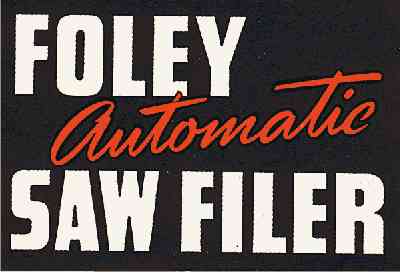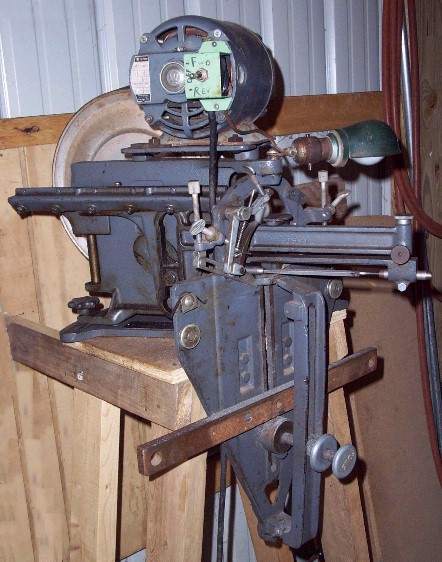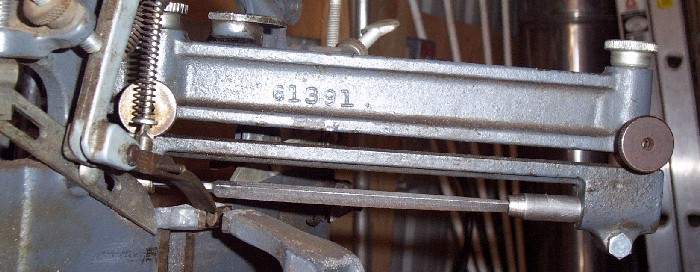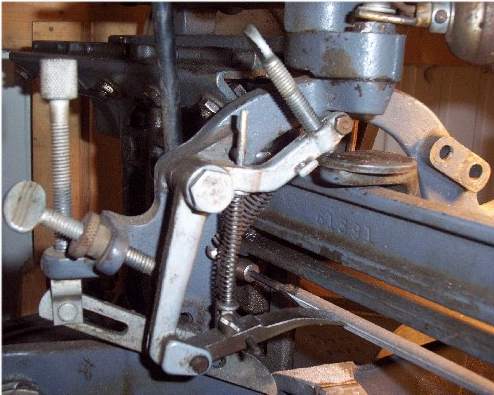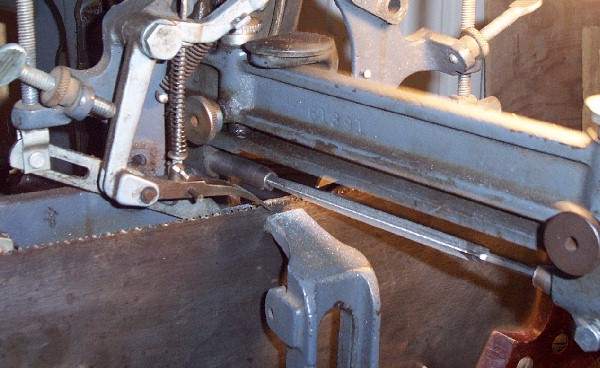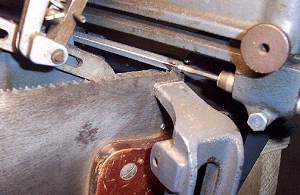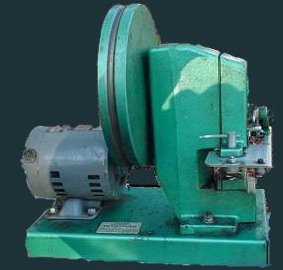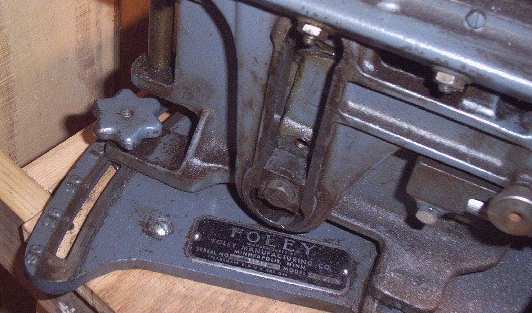|
Notice the bar stock near the bottom of the machine in the first photo. The previous owner added it to stabilize the saw carrier. Just below it is the clamp for the vise. It is designed to slide up and down and doubles as an arbor to hold circular saw blades for filing. There is also another carrier meant to hold bandsaw blades. The blade loops around the filer and is fed in a continuous cycle until all the teeth are sharpened.
The filer is also designed to joint the teeth, but I've not found any advantage to doing it that way, a mill file being much quicker. The real advantage to the automatic filer was the ability to file several carpenter's saws with 7 or 8 points per inch rapidly with minimal labor. Considering the cost of the Foley saw filer was $237 when the Model 61 came out in 1954, it wasn't a household tool. The price of the F-16 model was $222 in the late 1940's.
Foley's sales brochures for potential buyers included marketing plans for sharpening businesses run in communities of all population sizes. It's entertaining to read the pamphlets to see how times have changed over the last 50 years. For example, adding a Foley key cutting machine to a sharpening shop could result in another dollar or two of income per day.
I enjoy using my filer, but it's not something I couldn't live without in the shop. For the average galoot with a few saws, manual filing is efficient. With a little practice, manual filing is not difficult, and you can keep your saws sharp without spending a lot of time at it.
Finally, I wonder how many years automatic handsaw filers were profitable, either for the manufacturer or the machines' users. The F-16 filer came out during the Great Depression when few could buy the machine and carpenters weren't working or paying to have their saws sharpened. Then came World War II and war production. There were probably not a lot of saw filers being sold or used. The building-boom period after the war must have been good for the sharpening business, but it wasn't long before electric circular saws became dominant on job sites. By the 1960's sharpening machines became specialized and more complex to handle the variety of cutting tools being used. Routers, shapers, and circular saws with carbide cutters replaced handsaws, chisels, and planes. The investment needed to equip a sharpening shop for these tools became enormous. The volume of work needed to pay for the modern machines requires a steady customer base of industrial clients. Walk-in business at a storefront shop is not going to keep the carbide sharpeners running, although I'm sure you can still take in a dollar or two a day cutting keys.
For more information about Foley filers, go to the Foley Filer Blogspot.
Published 2002.
|
